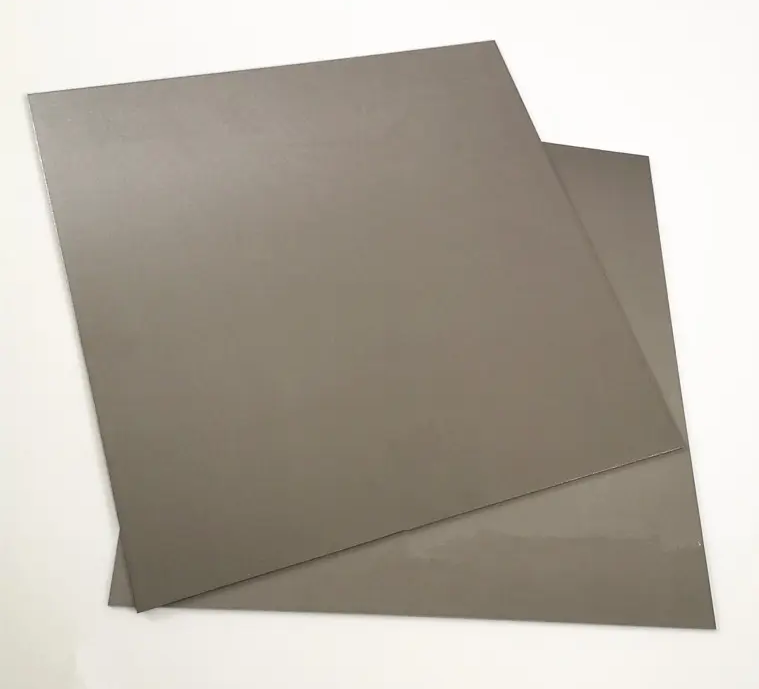Tantalum Metal (Tantalum Sheet and Plate)
Princeton Powder is a leading supplier of tantalum metal sheet and plate, offering tantalum at a competitive price in the United States. We provide tantalum plate for diverse applications, including electronics, medical devices, and chemical processing.
Material | Tantalum Plate, Tantalum Sheet |
CAS Number | 7440-25-7 |
Standard | ASTM B365, ASTM F560 (Medical Grade) |
Grade | R05200, R05400, R05252 (Ta2.5W), R05255 (Ta10W), R05240 (Ta40Nb) |
| Density | 16.65 g/cm3 |
Melting Point | 3020 ℃ |
Diameter | 0.004″ – 0.125″ diameter x L, customized |
Form | Metal Plate, Metal Sheet |
Surface Treatment | Pickling or Polishing |
Description of Tantalum Sheet and Plate
Tantalum plate and sheet are high-performance materials valued for their exceptional resistance to corrosion, high melting point, and excellent ductility. These properties make tantalum an ideal choice in various industrial and scientific applications. In electronics, tantalum plate is critical for manufacturing capacitors and high-temperature components, where stable conductivity is necessary.
In the medical field, tantalum’s biocompatibility allows it to be safely used for implants and surgical devices, offering durability and compatibility within the human body. Additionally, the aerospace and chemical processing industries frequently utilize tantalum sheet for its resilience to harsh conditions, such as high-pressure, high-temperature, and chemically reactive environments. Its versatility extends to laboratory equipment and nuclear reactors, where high purity and resistance to wear are essential. Tantalum’s unique combination of properties enables its use in advanced technology and research sectors that demand both strength and reliability in extreme environments.
Chemical Compositions of Pure Tantalum and Ta alloy sheet/plate
Grade | Chemical Composition (≤%) | |||||||||||
Ta | Fe | Si | Ni | W | Mo | Ti | Nb | O | C | H | N | |
Ta1 | Bal. | 0.005 | 0.005 | 0.002 | 0.01 | 0.01 | 0.002 | 0.03 | 0.015 | 0.01 | 0.0015 | 0.01 |
Ta2 | Bal. | 0.03 | 0.02 | 0.005 | 0.04 | 0.03 | 0.005 | 0.1 | 0.02 | 0.01 | 0.0015 | 0.01 |
TaNb3 | Bal. | 0.03 | 0.03 | 0.005 | 0.04 | 0.03 | 0.005 | <3.5 | 0.02 | 0.01 | 0.0015 | 0.01 |
TaNb20 | Bal. | 0.03 | 0.03 | 0.005 | 0.04 | 0.03 | 0.005 | 17.0-23.0 | 0.02 | 0.01 | 0.0015 | 0.01 |
Ta2.5W | Bal. | 0.005 | 0.005 | 0.002 | 3.0 | 0.01 | 0.002 | 0.04 | 0.015 | 0.01 | 0.0015 | 0.01 |
Ta10W | Bal. | 0.005 | 0.005 | 0.002 | 11 | 0.01 | 0.002 | 0.04 | 0.015 | 0.01 | 0.0015 | 0.01 |
Physical Properties of Tantalum
| Product condition | Tensile strength (MPa) | Elongation, % |
| Annealed | 300~600 | 10~30 |
| Half annealed | >600~1000 | <5 |
Unannealed | >1000 | <5 |
Application
Tantalum plates are widely used in electronics for capacitors and in medical applications for implants due to their corrosion resistance and biocompatibility. They are also ideal in aerospace and chemical processing for their durability under extreme conditions.

